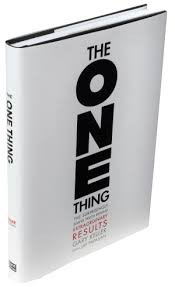If wishes were horses, the old adage goes, then beggars would ride. The phrase, dating back to the 16th century, of course is a poetic way to say what we all know to be true: you can’t wish something into existence, you have to take action.
If long meetings were new clients…then bureaucrats would run the world.
If meaningless emails were completed projects…then laggards would run the show.
If waxing eloquent with business buzzwords were strategies…then windbags would lead the pack.
Vision–that is the easy part. In fact, I have yet to meet a leader who doesn’t have a vision of the future.
However, I have also met a lot of leaders whose vision was more akin to “wishes” because they lacked the prescriptive actions needed to achieve that vision. Lots of energy got channeled into long meetings talking about the vision (read: “wishing”) than taking action–to actually get something done. And, well admittedly, I have to say I too have been that leader at times.
That said, the roles I’ve had over the past 15 years have required that I (along with the team I am on or am leading) must produce results. As I look back, here are a few nuggets I have pocketed along the way–strategies, have you, that have helped to overcome the inertia of exclusively vision-focused discussions. Here they are:
Visualize the steps, not just the outcome.
It’s common knowledge among athletes today that one important discipline is visualization. While the Russians didn’t beat us to the moon, they did discover the power of visualization for athletes. Their Olympic success in the 70s was attributed in part to this new discipline. Some of the research is crazy on this—psychology studies show exponential performance gains when athletes add visualization to their regimen (here is one: http://www.ncbi.nlm.nih.gov/pubmed/14998709).
But most people make the mistake of focusing exclusively on the picture of the outcome. Athletes more effectively visualize the steps that lead to the outcome. The way that I have implemented this is with the phrase, “Slow down to speed up.” When I slow down—even in the most urgent circumstances—and take time to think through and picture in my mind the steps, I am more effective because I take more of the right actions.
Guard my calendar.
A couple of books I’ve read this year have brought home to me again the importance of guarding my calendar. OK, let me say it more boldly:  building a moat around the castle in which is housed my calendar (read: priorities). Essentialism, The Disciplined Pursuit of Less by Greg McKeown and The ONE Thing: The Surprisingly Simple Truth Behind Extraordinary Results by Gary Keller have been good reminders and practical paths to clearing my calendar of all but the most important priorities.
building a moat around the castle in which is housed my calendar (read: priorities). Essentialism, The Disciplined Pursuit of Less by Greg McKeown and The ONE Thing: The Surprisingly Simple Truth Behind Extraordinary Results by Gary Keller have been good reminders and practical paths to clearing my calendar of all but the most important priorities.
Today, I have 2-4 hours blocked out most morning to dedicate to the essential activities of my most important work. There is one requirement for this time: I have to be taking action around my most important goals for the year, the month, the week, and/or the day. Which leads me to my last point…
Review my goals AND my action steps AND the names of the people I have met this year.
Most of us are familiar with the Harvard Business School study that identified the one characteristic 3% of the graduates had that resulted in 10X the earnings of the other 97%: they wrote down their goals with plans to accomplish them, and then reviewed them at least every year.
While I don’t have a Harvard MBA, ever since I read that study, I have been doing a version of that in my own life on the outside chance it works in other settings too (you don’t have to tell me to do the math!).
I also review the tactical action steps I’ve written down over the past weeks and month to make sure that, 1) I haven’t overlooked an action that I have committed to accomplish, and 2) I haven’t “lost sight of the forest for the trees”—which is having the right perspective.
Looking back over the immediate past gives me a perspective on the flow of work, direction of responsibilities, and most importantly, the right context for solving problems, finding creative opportunities, and managing my schedule.
The last thing I do in my portfolio notebook is to circle the names of all the new people I have met over the past few months. This helps me remember their names, reconnect with them if needed, and in general take care of the most important part of my life–relationships with people. While these new business relationships aren’t as important as my family, friends, and close colleagues, there are some people in this group that one day will become friends and close colleagues…if I am faithful to take care of the right relationships in my life.
Finally, I’d be remiss if I didn’t also point out that there are very personal disciplines (read: grace) that undergird these business practices, like prayer and Bible reading, but I leave that discussion for another time.
What disciplines do you have that help you to make sure your strategic decision leads to action?









